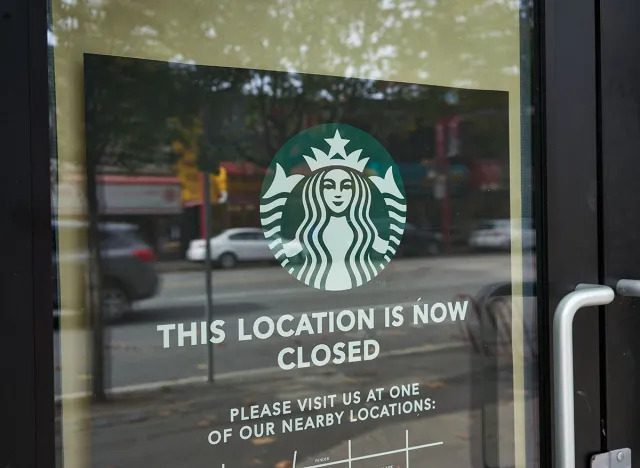Introduction
In a surprising turn of events, Starbucks, the coffee giant based in Seattle, has witnessed a significant decline in its market value, amounting to a staggering $11 billion. This article aims to delve into the reasons behind Starbucks’ market woes, exploring various factors contributing to its recent struggles.
Unraveling the Numbers
Starbucks’ market capitalization has taken a nosedive, with its share price plummeting by approximately 9% since mid-November. This translates to an $11 billion reduction in its overall market value. The intricacies of what led to this downturn are multifaceted and require a closer examination.
Factors Influencing Starbucks’ Decline
1. Sales Falling Short of Expectations
Analysts point to a confluence of factors impacting Starbucks’ performance, with data from third parties indicating that foot traffic and sales might be failing to meet Wall Street’s optimistic expectations. While Starbucks has experienced growth, it appears to be below the projections set by investors, causing concern among stakeholders.
2. Controversies and Public Perception
Starbucks has found itself entangled in controversies that may be affecting its public image. The handling of relations with workers attempting to unionize has generated negative headlines. The company witnessed worker walkouts in November, coinciding with its annual Red Cup Day. Additionally, Starbucks became embroiled in the Israel-Hamas conflict due to a pro-Palestine tweet from the union, prompting calls for a boycott from both ends of the political spectrum.
2.1 Impact of Controversies on Stock
Experts, however, express skepticism about the direct correlation between these controversies and Starbucks’ market decline. Analysts such as Sara Senatore from Bank of America and Nick Setyan from Wedbush believe that while the controversies might be a factor, they are not the primary drivers of the stock downturn.
The Boring Explanation: Investor Sentiment and Expectations
The stock market, often unpredictable, operates on the basis of investors’ expectations regarding a company’s future earnings. In Starbucks’ case, the company showcased a robust quarter from July to September, witnessing growth in same-store sales and increased store traffic. However, recent data suggests a potential slowdown in the October-December quarter, leading to a misalignment between investor expectations and actual performance.
3. Starbucks’ Pricing Strategy
Starbucks has implemented price hikes in response to inflation and rising labor costs. Some argue that the perceived value proposition of Starbucks may be contributing to the slowdown. Consumers, grappling with inflationary pressures, might view Starbucks coffee as a non-essential luxury, opting to cut back on such discretionary spending.
3. Starbucks’ Response to Pricing Concerns: Navigating the Terrain of Consumer Perceptions
Starbucks, a behemoth in the coffee industry, has been facing headwinds in the market, and one significant factor contributing to its recent challenges is its pricing strategy. The company, in response to inflationary pressures and rising labor costs, has implemented price hikes. While this move is not uncommon in the business world, it has sparked conversations about Starbucks’ perceived value proposition and the intricate dynamics of consumer behavior.
3.1 Balancing Act: Addressing Inflation and Maintaining Customer Loyalty
The decision to raise prices is often a delicate balancing act for companies, especially those in the consumer goods sector. Starbucks, known for its premium coffee offerings and immersive café experience, has opted to adjust its pricing structure. The rationale behind this move is grounded in the need to counteract the impact of inflation on operating costs and ensure sustainable profit margins.
3.2 Starbucks’ Competitive Positioning
In comparison to its competitors, Starbucks has taken a measured approach to price increases. While acknowledging the broader economic challenges, the company has sought to maintain a delicate equilibrium between adapting to cost pressures and not pricing itself out of reach for its loyal customer base.
Sara Senatore, a senior research analyst at Bank of America, notes that Starbucks’ pricing strategy is not necessarily the primary driver of its market challenges. However, the pricing dynamics play a role in the broader narrative, especially in an environment where consumers are increasingly conscious of their spending habits.
3.3 Customer Sentiment and the Luxury Conundrum
Consumer sentiment is a critical aspect of Starbucks’ market positioning. The perception of a Starbucks coffee as a daily necessity versus a luxury indulgence holds significant weight in shaping purchasing decisions. The current economic landscape, characterized by inflationary pressures, has prompted consumers to scrutinize their discretionary spending, and Starbucks, in this context, occupies a unique position.
The Impact of Global Concerns
4. China’s Role in Starbucks’ Woes
Starbucks, with a substantial presence in China, is not immune to global economic concerns. Any apprehensions about the Chinese economy can have adverse effects on Starbucks’ overall business. As China constitutes a significant portion of Starbucks’ operations, its economic landscape is a pivotal factor influencing investor sentiment.
5. The Unsettling China Question
Analyst Sara Senatore emphasizes that uncertainties related to China are always on investors’ minds. While the focus has been on domestic issues, the global perspective, especially concerning China’s economic trajectory, adds an extra layer of complexity to Starbucks’ market challenges.
The Starbucks Boycott Conundrum
6. Social Media Boycott Calls
In recent months, Starbucks has faced calls for boycotts on social media platforms like TikTok, Instagram, and Twitter. The boycott calls stem from the Israel-Hamas conflict, with both Israel and Palestine supporters urging consumers to spurn Starbucks.
6.1 Lack of Clear Impact
Despite the significant social media buzz surrounding the boycott calls, evidence linking these actions to Starbucks’ financial downturn remains elusive. The ambiguity of the situation, coupled with competing directions of protests, makes it challenging to ascertain the tangible impact on Starbucks’ financial standing.
7. Unionization Efforts and Starbucks’ Response
Starbucks workers’ ongoing efforts to unionize have also played a role in the company’s narrative. While a relatively small fraction of Starbucks stores have voted to unionize, the impact on the company’s overall approach to workers’ rights has been substantial.
7.1 The Starbucks-Union Dynamic
Starbucks’ unionization journey has prompted the company to reassess its approach to workers’ rights. The release of a labor report, shareholder requests, and the ongoing dialogue with Starbucks Workers United underscore the influence of unionization efforts on the company’s strategies.
Conclusion: Navigating a Challenging Terrain
As Starbucks faces a tumultuous period heading into the end of 2023, the intricacies of its market challenges paint a complex picture. While controversies and social media boycott calls contribute to the narrative, the core issues appear to revolve around investor expectations, pricing strategies, and the global economic landscape. Starbucks’ ability to navigate these challenges will likely shape its trajectory in the coming months, making 2024 a critical year for the coffee giant.










